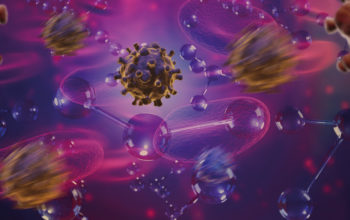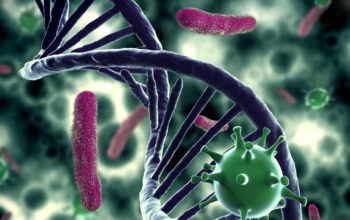
Date: 20th November 2019
The translation of CRISPR-based therapies into FDA-approved, market-ready products is beginning to come to fruition. We reported back in February the first wave of these revolutionary treatments breaking into clinical trials. The first patient to be included was treated for transfusion-dependent β thalassemia (TDT), with a second clinical trial aimed at treating a subsequent patient for sickle cell disease (SCD).
The trials amalgamate expertise from CRISPR Therapeutics and Vertex Pharmaceuticals using their product CX001, an investigational, autologous, CRISPR-Cas9 gene-edited hematopoietic stem cell therapy.
Now the companies have announced positive data from the initial two patients in the open-label phase 1/2 clinical trials, which are designed to assess the safety and efficacy of a single dose of CTX001.
Gene-editing process
The gene-editing process for both patients saw hematopoietic stem and progenitor cells (HSPCs) harvested from their peripheral blood, and edited using CRISPR/Cas9 technology.
The stem cells were engineered to produce high levels of foetal haemoglobin (HbF) in red blood cells. Globin switching from foetal-to-adult globin usually occurs shortly after birth, resulting in a decrease of HbF and an increase in adult globin. Clinical observations have demonstrated the ability of HbF to ameliorate the severity of both SCD and β-thalassemia which has led to an interest in devising therapeutic approaches to stimulate HbF.
Patients underwent myeloablative busulfan conditioning (a chemotherapy-based conditioning regime) prior to stem cell transplant, in which the edited cells (called CTX001), were infused back into the patient. Patients were then monitored for signs of engraftment, which if successful, would show the development of mature blood cells from CTX001. Patients were then subjected to monitoring, to track the impact of CTX001 on multiple measures of disease.
Transfusion-Dependent Beta Thalassemia (TDT) outcome
The patient with TDT previously required 16.5 transfusions per year for the 2 years prior to enrolling on the clinical study. After CTX001 infusion, neutrophil engraftment was achieved at 33 days, with platelet engraftment occurring shortly after, at 37 days. Two serious adverse effects did occur, both of which were resolved and were attributed to the busulfan conditioning and not the CTX001.
At nine months after CTX001 infusion, the patient is currently transfusion-independent.
Sickle cell disease (SCD) outcome
In the two years prior to inclusion in the trial the SCD patient had experienced seven vaso-occlusive crises (VOCs) each year. This occurs when the microcirculation is obstructed by sickled red blood cells. After CTX001 infusion engraftment both neutrophils and platelets were observed at 30 days. Three severe adverse events occurred in this patient, again not considered to be related to the CTX001.
The data for the SCD patient is currently only running at four months, but they are currently VOC free.
Ongoing trials
Both trials, for TDT (CLIMB-Thal-111 ) and SCD (CLIMB-SCD-121) are in the recruitment phase. Several additional patients have been enrolled in both studies and have had the drug product manufactured. Up to 45 patients for each are hoped to be included, aged 18-35, from US, Canada and Europe.
Although the trial is still in its infancy, the initial positive signs will provide hope to those suffering with these severe haemoglobinopathies. Clearly, for the two patients receiving the treatment the journey has not been all plain sailing, the severe adverse events even if not attributed to CTX001 itself perhaps depicts the seriousness of the underlying disease and the poor state of health of the patients. We will be eagerly awaiting the results for the two year follow up period post infusion and hope the results remain positive.
In September this year we reported the use of CRISPR genome-edited donor cells to treat a HIV patient with blood cancer for the first time . The outcome was varied in its achievements. Successful transplantation and long-term engraftment of CRISPR-edited HSPCs was seen, as in the above study. This time over a 19 month period, with little off-target effects observed.
Unfortunately however, the therapy was not effective as an HIV treatment (although the cancer remained in remission), speculated to be due to the low efficiency of gene edits in the stem cells (around 17%), and once transplanted only 5-8% of the stem cell progeny contained the edits. Currently this data for the TDT and SCD trials is not available so comparisons cannot at this time be made.
From a wider perspective, we reported earlier in the year a deal that enables Vertex to use CRISPR Therapeutics technologies in the search for new therapies to Duchenne Muscular Dystrophy and Myotonic Dystophy. Success in the current clinical trials will surely be leveraged for any new emerging therapies. With Vertex invested in creating transformative medicines for people with serious diseases, anticipation grows for emerging gene-editing therapies in the future.
For more information please read the press release from Vertex
For more information on Vertex and CRISPR Therapeutics please see our synthetic biology maps

